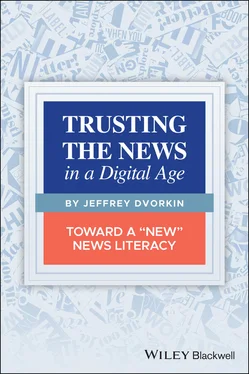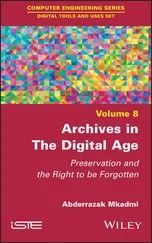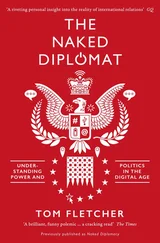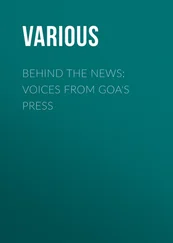Jeffrey Dvorkin - Trusting the News in a Digital Age
Здесь есть возможность читать онлайн «Jeffrey Dvorkin - Trusting the News in a Digital Age» — ознакомительный отрывок электронной книги совершенно бесплатно, а после прочтения отрывка купить полную версию. В некоторых случаях можно слушать аудио, скачать через торрент в формате fb2 и присутствует краткое содержание. Жанр: unrecognised, на английском языке. Описание произведения, (предисловие) а так же отзывы посетителей доступны на портале библиотеки ЛибКат.
- Название:Trusting the News in a Digital Age
- Автор:
- Жанр:
- Год:неизвестен
- ISBN:нет данных
- Рейтинг книги:4 / 5. Голосов: 1
-
Избранное:Добавить в избранное
- Отзывы:
-
Ваша оценка:
- 80
- 1
- 2
- 3
- 4
- 5
Trusting the News in a Digital Age: краткое содержание, описание и аннотация
Предлагаем к чтению аннотацию, описание, краткое содержание или предисловие (зависит от того, что написал сам автор книги «Trusting the News in a Digital Age»). Если вы не нашли необходимую информацию о книге — напишите в комментариях, мы постараемся отыскать её.
How to use critical thinking to discern real news from fake news in a Digital Age
Trusting the News in a Digital Age
Trusting the News in a Digital Age
Trusting the News in the Digital Age
Trusting the News in a Digital Age — читать онлайн ознакомительный отрывок
Ниже представлен текст книги, разбитый по страницам. Система сохранения места последней прочитанной страницы, позволяет с удобством читать онлайн бесплатно книгу «Trusting the News in a Digital Age», без необходимости каждый раз заново искать на чём Вы остановились. Поставьте закладку, и сможете в любой момент перейти на страницу, на которой закончили чтение.
Интервал:
Закладка:
“Over‐by‐over” (In North American English, that would be “play‐by‐play.”)Sports analysis has taken on a more interesting and more public way for the public to understand the more arcane aspects of sports (a.k.a. “inside baseball”).
BloggingThe ability of the Web to allow personal opinion alongside investigative journalism is astonishing. It has become a truly international expression of popular notions and values. It has also given a boost to audio reporting by offering reporting in a more personal form.
The “Uberization” of News
There remains some ambivalence about where this all may be going. Media organizations are embracing new technologies, even as journalists see their traditional ranks diminishing. Journalists and journalism schools are teaching new technologies. Marketing is employing new methods of communication and storytelling. But no clear way forward has emerged.
Media managers are privately wondering what went wrong. They are asking why journalism doesn't pay any more. If the solutions are hard to discern, they have only to critically examine the technology they so eagerly embrace.
It's the digital technology. As digital technologies emerged in the late 1990s and early 2000s, it spread throughout many industries, including journalism. Not coincidentally, in media organizations, ratings and circulation began to decline. Media organizations, pressured by shareholders and desperate to find a way to return to bigger profit margins, seized onto digital technology as the silver bullet of transformations. But if ever there was a poison pill, it is digital culture. It has enlarged our possibilities while offering up cat videos, celebrity sightings, and “listicles.” At the same time, a few news organizations ( The Guardian and The New York Times ) have been able to make investments in online content successful by attracting younger audiences. Most news organizations, however, continue to struggle financially.
Yet media organizations cling to digital news‐making and reporting strategies like a torpedoed sailor clings to a raft, hoping that the next technological submarine won't hit them again.
Clearly we aren't going back to an analog world. Yet, the information needs of the public and the economic requirements of journalism need to intersect. But where? And how? There are no easy answers to these complicated questions…
This changing definition of news can also be connected to the “uberization” of news. Uberization refers to services offered directly and on‐demand through a website or mobile‐app, often (but not always) with the service being provided by an individual or third party who is contracted by the website or app but is not an employee. Some perspectives on these strange times regarding the uberization of news:
We have a lodging system called Airbnb. It doesn't own any actual hotels.
There's a food delivery service called Foodora. It doesn't own any restaurants.
There's a video service called YouTube. It doesn't own movie studios or TV networks. (Like other streaming services, it is also generating original content from freelance producers).
There's a ride‐hailing service called Uber (where the term “uberization” comes from). It doesn't own any cars.
In this so‐called gig economy, where companies are getting rid of costly elements such as staff employees (who receive benefits) and replacing them with freelancers (who receive fewer or no benefits), journalism may also be affected by the increased digitization of information and media institutions. The industries mentioned above – and many others – have been transformed by digital innovation. While customers have benefited from the ease, cost‐effectiveness, and simplicity of digital technology, there is also a powerful downside: wages for workers in affected industries have plummeted, working conditions are often worse, and company morale, in many instances, is dropping and has not yet hit rock bottom.
At the same time, profit margins for owners in many industries have never been greater.
Journalism is also being uberized. There is less reliance on staff reporting and more reliance on content spread by freelancers and platforms such as Facebook and Twitter, resulting in less so‐called enterprise reporting where journalists are given the time and the resources to generate original journalism. As a result, newspapers have closed or been downsized, and broadcasters have cut their more expensive (and usually more labor‐intensive) content. In the rush to return to the once rich profit margins of the early 2000s, media organizations are being urged by their shareholders to dispense with expensive ventures like international reporting. Instead, news consultants are hired to tell their news clients that weather , traffic , and crime (WTC) are what most audiences prefer.
Not coincidentally, WTC also happens to be the cheapest and most readily available content. And all three bits of low‐hanging journalistic fruit happen to originate from government sources. So the issue of how independent journalism is remains in question.
The Dangers of “Clickbait”
Many media organizations, especially broadcasters, try to entice their audiences through “clickbait.” Clickbait is a link or headline that catches the eye by promising interesting content, but it then fails to deliver. According to TechCrunch, the purpose of clickbait is to generate page views because “[m]ost sites use traffic numbers like page views or unique visitors to bill advertisers and measure their general success” (Escher and Ha, 2016).
Clickbait works simply because it does attract eyeballs. The assumption seems to be that audiences will stay for the serious content after gorging on the fluff. Many media websites seem to be particularly smitten with clickbait, even though their journalists complain, and the public occasionally resents this waste of the journalistic efforts and reputation.
But it can earn money for a media company, so the public seems willing to tolerate it.
No technological change can ever be reversed. Occasionally, it can be slowed, even questioned. Can the effects of the digital culture be made to work on behalf of the culture, rather than against it? How can the better aspects of traditional journalism be made to fit inside the technological inventions that are being produced constantly? If journalism is to survive, then it has to resist digital culture's worst qualities (listicles, cat videos, celebrity sightings, and porn) in order to let digital culture offer what it can best provide.
From Media Trust to Media Mistrust
The election of Donald J. Trump as President of the United States has heightened the sense of crisis in journalism. Even as some media organizations – both legacy and independent – have given citizens some of the best reporting in years, the economic threat to journalism is now coupled with the attacks – both physical and verbal – on journalists in America and elsewhere.
Trump's election changed journalism in other ways, as well. For many media organizations in America, especially, the gloves are off. The assumption that fact‐based journalism is professionally neutral has been stripped away. Instead of the traditional “stenographic” approach to reporting – or reporting basic facts without much contextualization – we are now seeing the rise of opinion‐based reporting – or reporting that is, in the tradition of the talk radio that emerged in the 1980s, highly editorialized and confrontational – instead. This form of journalism, when combined with a new populist quality (some of the British press has always acted as an agent of popular sentiment), fueled by the Internet, has resulted in a revolt against what some components who rail against “fake news” call the liberal media elites.
Читать дальшеИнтервал:
Закладка:
Похожие книги на «Trusting the News in a Digital Age»
Представляем Вашему вниманию похожие книги на «Trusting the News in a Digital Age» списком для выбора. Мы отобрали схожую по названию и смыслу литературу в надежде предоставить читателям больше вариантов отыскать новые, интересные, ещё непрочитанные произведения.
Обсуждение, отзывы о книге «Trusting the News in a Digital Age» и просто собственные мнения читателей. Оставьте ваши комментарии, напишите, что Вы думаете о произведении, его смысле или главных героях. Укажите что конкретно понравилось, а что нет, и почему Вы так считаете.












